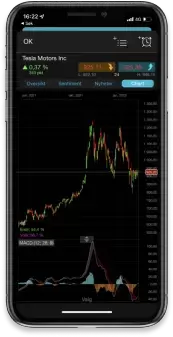The upcoming FOMC meeting will perhaps be the most anticipated US Federal Reserve rate decision since it started its rate-hike cycle in March 2022.
According to the CME FedWatch tool, the probability of the Fed further slowing the pace of rate hikes is more than 98%. Thus, it is highly expected that the central bank will raise the interest rate by 25 basis points to 4.75%. This will be the first 25bps hike since May last year, which implies the Fed is probably close to the end of its rate-hike cycle.
The Fed Funds futures contracts are pricing for another 25bps increase in March before it pauses further rate hikes. For investors, the focus of the FOMC meeting is to figure out when the Fed will start the rate cut cycle, and whether the central bank will change its hawkish “higher for longer” stance. A dovish Fed will most likely further the new year rally. Conversely, a hawkish policy guidance could certainly upend the multi-month-long rebounding euphoria.
Markets are pricing in a less hawkish Fed
Though an early Fed pivot may seem unlikely, market participants are probably pricing in a less hawkish Fed at the back of cooling inflation and deteriorating economic outlook. The newly released US fourth-quarter GDP announcement shows that economic growth is losing steam and that company earnings will be on the more conservative end. However, the recent Wall Street rally implies that investors are buying into expectations of a dovish Fed despite the gloomy economic outlook. Hence, markets may continue their new year rally if the Fed meets the expectation for a less hawkish tone, with the signalling a rate hike pause being a clear indication of this.
When based on precedence, equity markets usually hold during a rate hike cycle and fall in the rate cut cycle. Also, the CBOE volatility index would fall to about 10 before spiking to above 30 when a recession happens. This sudden spike usually causes a market crash (see the chart below).

From the image above, the market's bullish rally may continue into February since the Fed is most likely to raise the rate further. On the other hand, the VIX is still moving at a relatively low level around 20.
Growth stocks may maintain an upside momentum
Notably, heavily beaten down tech shares have been outperforming the market amid expectations for an improved macro environment, with Nasdaq up nearly 9% year to date.

Across the S&P 500, the typical growth sectors that include communication services (XLC), consumer discretionary (XLY), and technology (XLK) rose the most in January, up 14.7%, 13.2%, and 8.9%, respectively. By contrast, the defensive sectors, such as consumer staples (XLP), healthcare (XLV), and utilities (XLU) underperformed in the last month. The sector rotation implies that investors piled into high multiple stocks amid expectations for a slowdown in rate hikes by the Fed, and probably a sooner-than-expected pause of the cycle.
Potential moves in the S&P 500
One thing to note for FOMC days is that history does not necessarily repeat itself when it comes to market reactions. What investors can expect is major short-term swings and volatility. On the one-day chart, the S&P 500 tends to rise about 0.28% on average on a Fed raise day according to the states from the Bespoke Investment Group. Hence, bulls may have the upper hand if the Fed does raise the interest rate tomorrow. However, the markets tend to erase gains during the post-meeting press conference when Fed chair Jerome Powell displays a hawkish stance.
On a longer timeframe, the S&P 500 is expected to rise towards 4,500 (April 2022's high). This is equal to a 10% rally from when the Fed is expected to pause the rate-hike cycle. In comparison, more aggressive rate hikes may spook the markets and send the index tumbling down to October lows of around 3,500.

Disclaimer: CMC Markets is an execution-only service provider. The material (whether or not it states any opinions) is for general information purposes only, and does not take into account your personal circumstances or objectives. Nothing in this material is (or should be considered to be) financial, investment or other advice on which reliance should be placed. No opinion given in the material constitutes a recommendation by CMC Markets or the author that any particular investment, security, transaction or investment strategy is suitable for any specific person. The material has not been prepared in accordance with legal requirements designed to promote the independence of investment research. Although we are not specifically prevented from dealing before providing this material, we do not seek to take advantage of the material prior to its dissemination.







